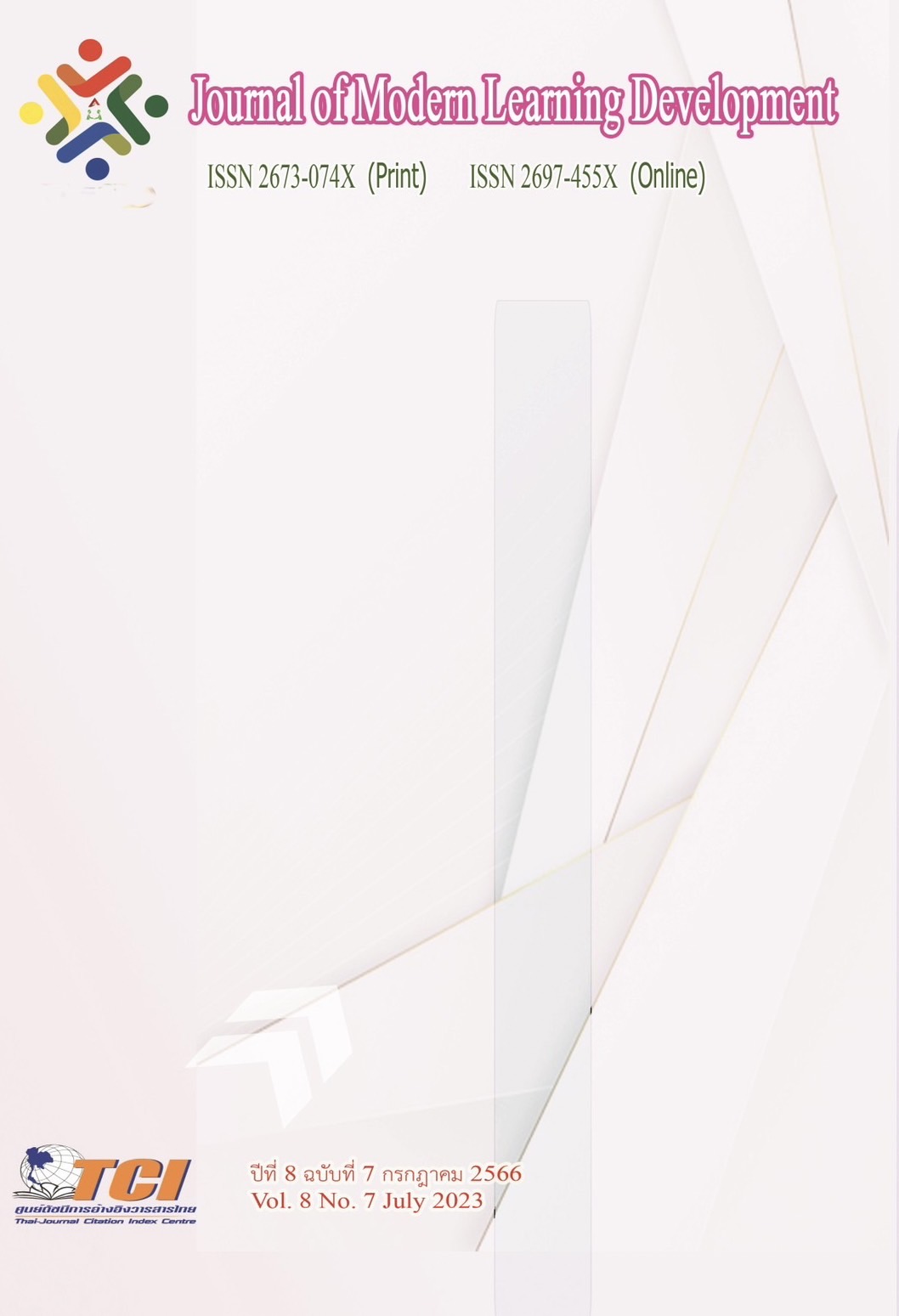Modeling Behavior Intention to Consume Crickets in South Korea
Main Article Content
Abstract
The objectives of this research were 1) to study the components of cricket consumption in South Korea, and 2) to develop the modeling behavior intention to consume crickets in South Korea. This research was the quantitative research. The sample group were 400 people living in South Korea, whom the ages of more than 15-year-olds. The tool used to collect data were the questionnaires, that had Cronbach's alpha at 0.85. The statistics used for data analysis include confirmatory factor analysis and structural equation model.
The results showed that 1) The modeling behavior intention to consume crickets in South Korea consisted of 6 components; attitude toward the behavior, personal influence, social media influence, perceived behavioral control, food neophobia, and intention to accept cricket consumption. 2) It is indicated that the developed program was consistent with the empirical statistics and consistent with the hypothesis. It was found that attitude toward the behavior (ATB), personal influence (PIN), social media influence (SMI), and perceived behavioral control (PBC) were found to have a positive influence on intention to accept cricket consumption (ICC) in South Korea at 0.05 significance. While food neophobia (FNP) had negative influence on intention to accept cricket consumption (ICC) in South Korea at 0.05 significance.
Article Details
References
วันวิสาข์ มงคล และบุษกรณ์ ลีเจ้ยวะระ (2564). องค์ประกอบของการยอมรับโปรตีนจิ้งหรีดในออสเตรเลีย. วารสารพัฒนาการเรียนรู้สมัยใหม่. 6 (2), 208-222.
Ajzen, I. (1991). The Theory of Planned Behavior. Organizational Behavior and Human Decision Processes. 50, 179-211.
Brekelmans, A. (2016). Determinants of Insect Consumption and an Investigation of its Place among other Alternative Protein Sources in the Netherlands. Master of Science Thesis in Applied Communication Science. Department of Social Sciences: Wageningen University.
Chang, H.P., Ma, C.C. and Chen, H.S. (2019). Climate Change and Consumer’s Attitude toward Insect Food. International Journal of Environmental Research and Public Health. 16, 1606.
Cochran, W.G. (1977). Sampling Techniques. 3rd ed. New York: John Wiley & Sons.
Han, R., Shin, T.J., Kim, J., Choi, Y. and Kim, Y. (2017). An overview of the South Korean edible insect food industry: challenges and future pricing/promotion strategies. Retrieved November 10, 2021, from https://onlinelibrary.wiley. com/doi/10.1111/
-5967.12230
Kohl, A. (2016). Business Potential of Insect Food Studying the attitudes towards edible insects among young adults. Retrieved June 17, 2019, from https://www.theseus.fi/bitstream/
handle/10024/115146/Kohl_Alexander.pdf?sequence=1&isAllowed=y.
Koreaboo. (2558). 11 อาหารท้องถิ่นของคนเกาหลีที่คุณอาจไม่กล้ากิน. ออนไลน์. สืบค้นเมื่อ 24 มิถุนายน 2564. แหล่งที่มา: https://www.daradaily.com/news/47535/read
Kotler, P., Kartajaya, H. and Setiawan, I. (2017). Marketing 4.0 : Moving from Traditional to Digital. New York: John Wiley & Sons.
Lacey, R. (2016). CRICKETS AS FOOD: The perceptions of and barriers to entomophagy and the potential for widespread incorporation of cricket flour in American diets. Retrieved June 17, 2021, from https://sites.lsa. umich.edu/sustainablefoodsystems2/
wpcontent/uploads/sites/546/2016/05/Rachael-Lacey_Thesis.pdf
Legendre, T.S. and Baker, M. (2021). Legitimizing Edible Insects for Human Consumption: The Impacts of Trust, Risk–Benefit, and Purchase Activism. Journal of Hospitality and Tourism Research, 20 (1), 1-23.
Liu, A.J., Li, J. and Gómez, M.I. (2020). Factors Influencing Consumption of Edible Insects for Chinese Consumers. Insects, 11, 10. doi:10.3390/insects11010010
Lucchese-Cheunga, T., De Aguiar, L.K., Silva, R.F.F. and Pereiraa, M.W. (2020). Determinants of the Intention to Consume Edible Insects in Brazil. Journal of Food Products Marketing, 26 (4), 297-316.
Pambo, K.O., Mbeche, R.M., Okello, J.J., Mose, G.N., and Kinyuru, J.N. (2018). Intentions to consume foods from edible insects and the prospects for transforming the ubiquitous biomass into food. Agriculture and Human Values, 35, 885-898.
Reilly, S. (2018). Food Neophobia: Behavioral and Biological Influences (Woodhead Publishing Series in Food Science, Technology and Nutrition). Cambridge: Woodhead Publishing.
Sekaran, U. & Bougie, R. (2016). Research Methods for Business. 7th ed. Hoboken, NJ: John Wiley & Sons.
Sogari, G., Menozzi, D. and Mora, C. (2018). The food neophobia scale and young adults’ intention to eat insect products. International Journal of Consumer Studies, 43, 68-76.
Wilkinson, K., Muhlhausler, B., Motley, C., Crump, A., Bray, H. and Ankeny, R. (2018) Australian Consumers’ Awareness and Acceptance of Insects as Food. Retrieved July 14, 2021, from https://www.ncbi.nlm.nih.gov/pmc/articles/ PMC6023301/


